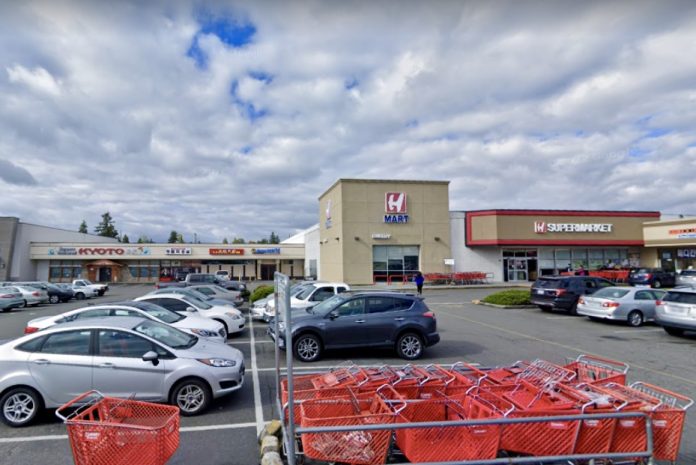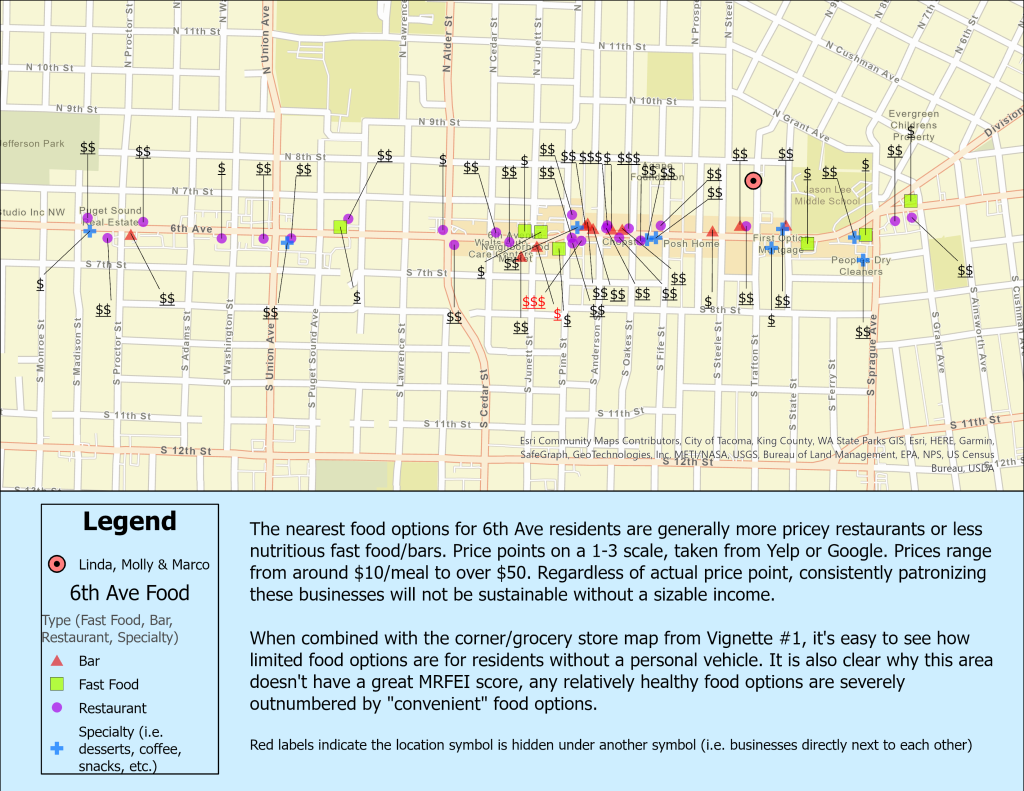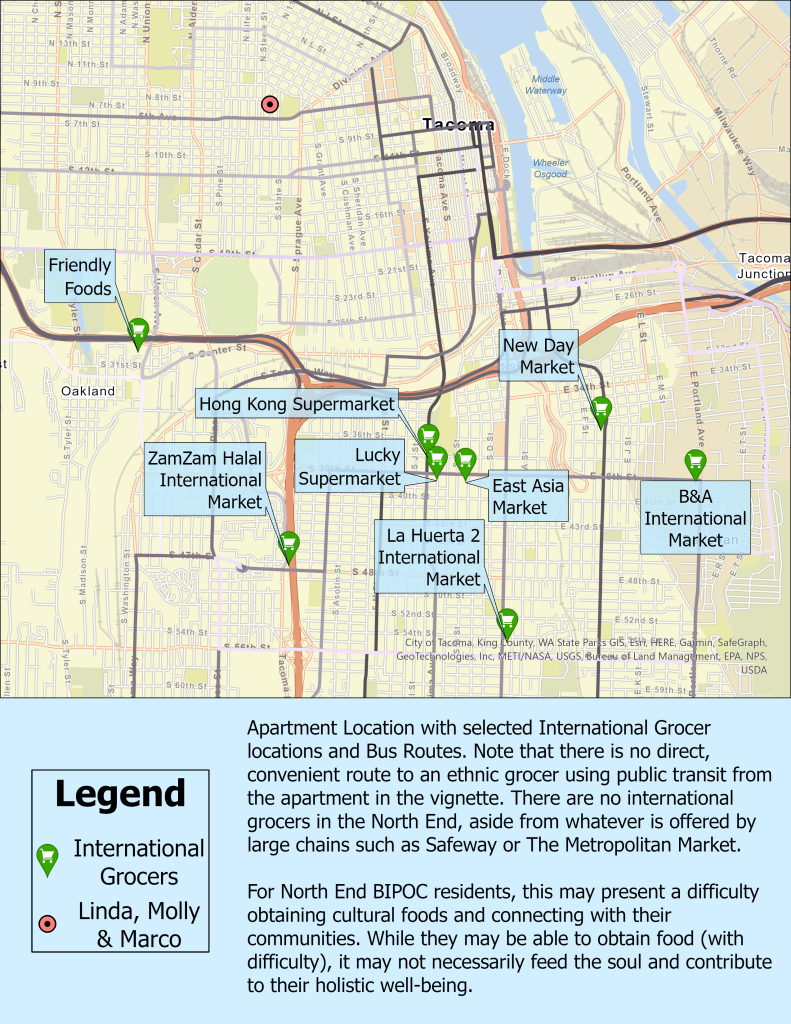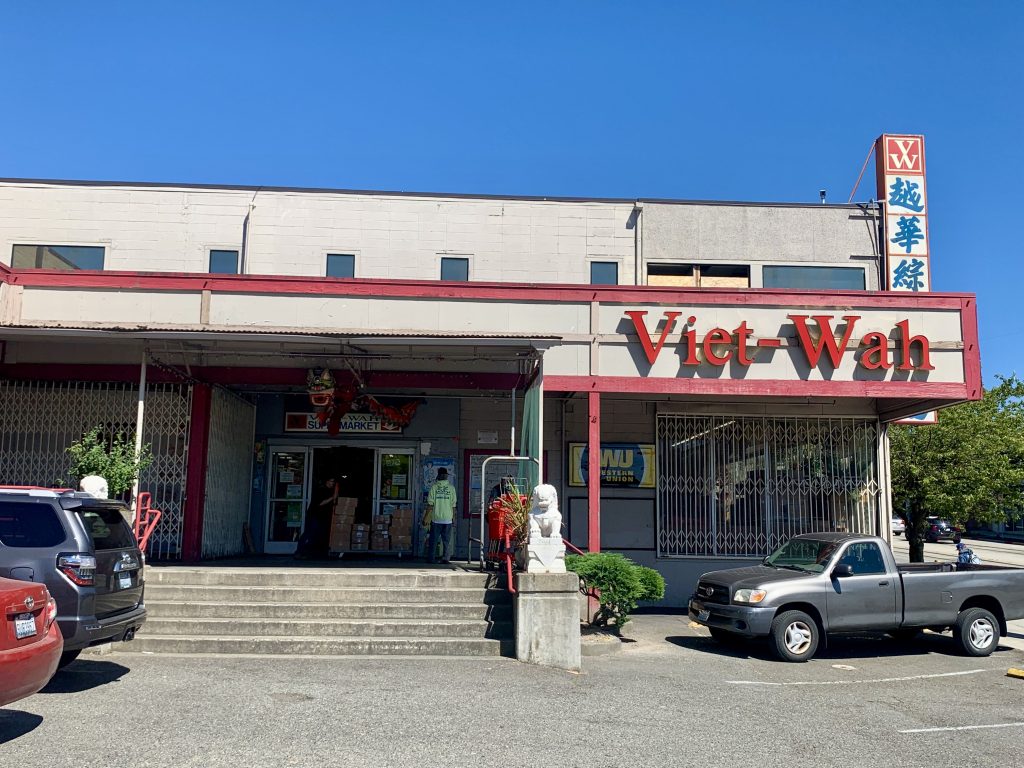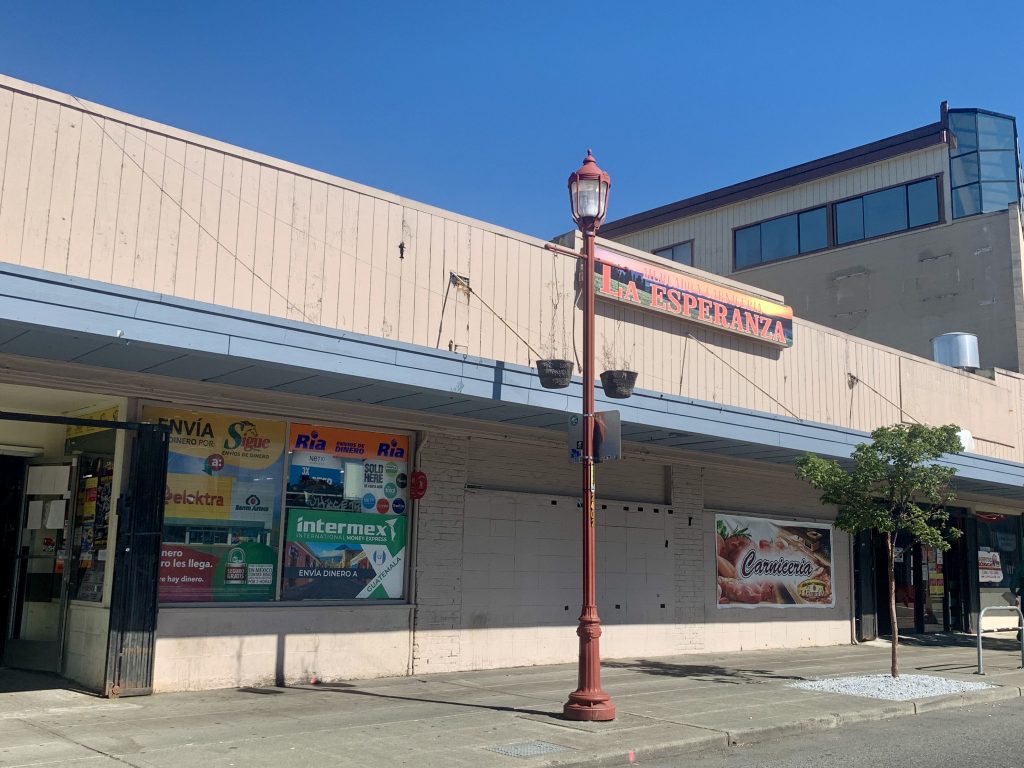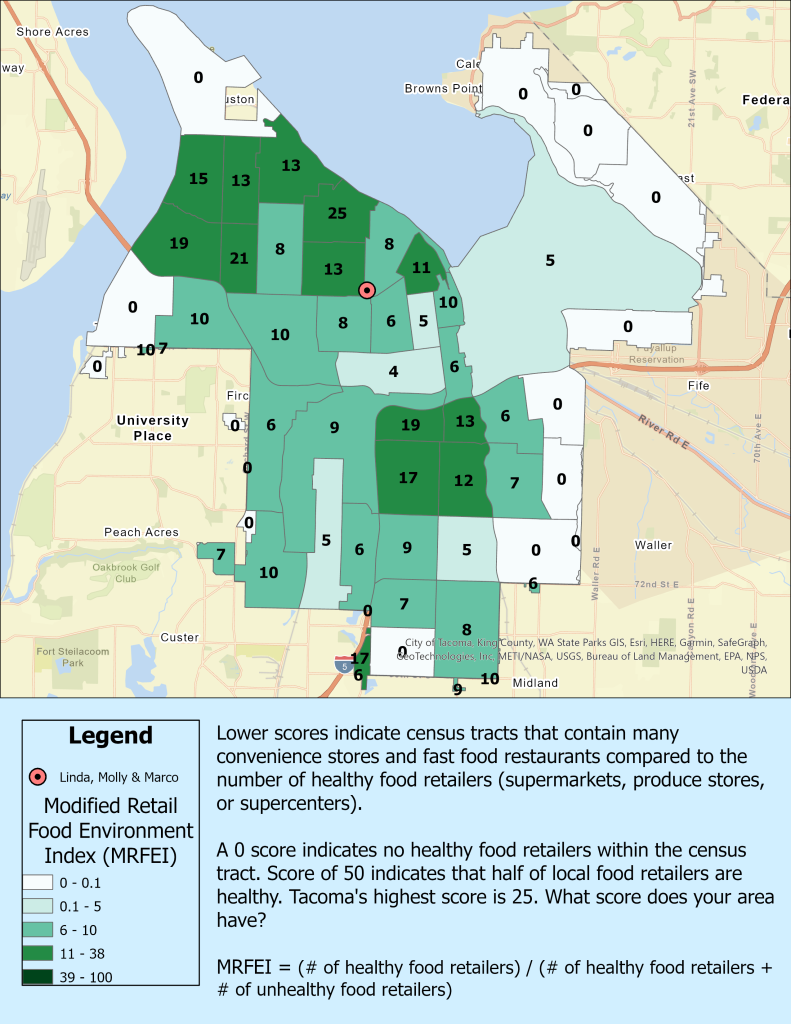This is the second of three vignettes depicting possible conversations between imaginary people in Tacoma as the city grapples with growth, densification, and other forms of change.
A common topic across all of these stories will be Home in Tacoma, an ambitious plan to overhaul Tacoma’s zoning laws to allow denser and more affordable housing to be built in our neighborhoods. In previous coverage, while we have lauded the plan, we have pointed out deficiencies in equity for both residents and workers. Recently, the City of Tacoma completed the full “Scope of Work” for Home in Tacoma and will soon begin implementing the plan into city policies.
To support and enhance the narratives, we’ve included maps derived from real data. Through these characters, readers are invited to listen in as people in their community deliberate and make determinations within a shifting urban landscape.
From The Guardian:
America’s sustainable food movement has been steadily growing, challenging consumers to truly consider where our food comes from, and inspiring people to farm, eat local, and rethink our approaches to food policy. But at the same time, the movement is predominantly white, and often neglects the needs and root problems of diverse communities.
“Food Apartheid: the root of the problem with America’s groceries, The Guardian, 2018
Linda looks up from weeding to see Molly taking bags of groceries from a delivery driver parked in the middle of the street. She smiles and waves at Molly, who manages a smile but not the wave, her hands full.
Minutes later, Molly comes over to Linda and compliments her on the garden.
“It’s a work in progress, but it’s coming along. How are things?”
“Not too bad, actually,” says Molly. “In fact, probably, overall, good.”
“How are you finding the neighborhood now that you’ve been here a few weeks?”
“I’m liking it.” Though I’ve blown my budget on carsharing and grocery delivery already this month.
“I think the number 11 bus, which stops four or so blocks to the north of here, takes you to Proctor,” says Linda.
“Yeah, actually,” responds Molly. “I’ve managed two grocery runs on the 11 so far. I just can’t always plan well-enough in advance to make it possible all the time. It’s not that convenient when the bus comes by every 30 minutes.”
“So no car for you yet, then.”
“Not yet. “Though I do have to figure out what to do for my mom’s visit. She’s coming out in two weeks and has all these plans to make me my favorite foods from growing up, but the nearest grocery stores that carry the ingredients we need are in South Tacoma. I couldn’t find any direct bus routes to any of those stores.”
“Well, it’s nice your mom is visiting. And lucky you, getting all those home-made meals. Are the ingredients your mom needs that unique? You couldn’t get them at Met Market? They’re pretty well-stocked. They always have what I need when I make an Asian or Mexican dish.”
Molly tried to hide a grimace.
“Well, yes and no. There’s special peppers and spices we need, and you usually can’t get those even at the fancy stores. They’re often imported from my mom’s country. And I did see that Met Market had a couple of substitutes that would work in some of my mom’s recipes, but they sell them for 2 or 3 times what we could get at the Korean store. What you get at fancy stores is often lower quality, and you end up paying more for a smaller amount of it. My mom would never let me pay that much for those ingredients. I doubt she’d even feel comfortable going into a store like Met Market. It’s a different world to her.”
“Are international stores really that much cheaper than your typical grocery store? I’ve heard people say that, but I’ve never been.”
“Much cheaper than the fancy stores, yes, and often cheaper than Safeway or the other chains. But they have so many other things going for them — hot food sellers, bakeries, and for someone like my mom, who doesn’t speak much English, it’s just a more familiar experience, I think.”
“Ha. So you’ve heard that one, too. Yup, that, and then there’s just always someone to talk to for my mom at the Korean store. She’s always running into someone she knows when we go grocery shopping back home.”
“You mean to say that your culture, and all Hispanic cultures, aren’t just limited to one aisle at the grocery store?” asks Linda, sarcastically.
Molly doesn’t say it out loud to Linda, but thinking about her mom’s experience at the Korean grocery store brings back the sights, sounds, and smells of shopping there as well. It’s familiar and comforting for her too, and she realizes then that she will have to take her mom to the local international market when she’s in town.
“That’s interesting. I guess I always think of the grocery store as an in-and-out experience. The fewer people I talk to, the better.”
“I get that. Sometimes all I want is convenience too.”
“You know, the hospital has started looking into how it can better support efforts to bring good, quality, healthy food to parts of the city that lack grocery stores. Everyone needs good food, especially as we work with populations on prevention and in their recoveries.”
“In nursing school we talked a lot about the correlation between food access and overall health and well-being. What I remember thinking then is that a lot of people think about this as only an issue of access, which is important, but there’s more to it. You can’t just plop a grocery store in the middle of the neighborhood and assume that it’s going to provide the foods people want at prices they can afford.”
“And how you are talking about your mom’s experience, it also sounds like we have to think about the ways grocery stores connect people—to each other, but to their cultures, too.”
“So, it’s access, yes, and affordability, but also…hmm. I’m not sure what I’m getting at here…but it’s also…”
“It’s also about ensuring people have access to the types of foods and ingredients that they need and want, and to make sure that the options to get these aren’t segregated to other parts of the city where people may not have easy access to.”
“Yeah, I think that’s right. Especially for people like my mom, affordability really matters. But so do other factors, like finding ingredients that sustain you in more ways than one. My mom would probably drive out of her way to go to a store where prices are affordable and where she can find connection to her culture and people. It feeds the soul, you know? Kinda like a community gathering spot. But I bet she would appreciate it more if those ingredients didn’t require her to go to a totally different part of town.
“Sadly, I don’t think lots of national grocery stores are set up for that.”
“Yeah, it doesn’t seem like it.”
“I’m thinking we need to keep this in mind if the hospital ends up enacting some program or programs related to food access. I’m going to find out who is leading this initiative and see who there is to talk to about it. Getting people food should be inclusive and equitable. It’s not just a matter of, as you said, plopping down a grocery store in the middle of a neighborhood.”
“If you do, I’d love to take part, in whatever way I can. I’d be happy to share my experiences and difficulties in getting the foods I need.”
“That’d be great. I’ll keep you posted.”
“Thanks. Anyway, I have to get going. I just wanted to stop by to say hello and to compliment your handy work with these plants. Maybe I could get you to grow some stuff for my mom.”
“Yeah maybe, I appreciate it. Until next time.”

